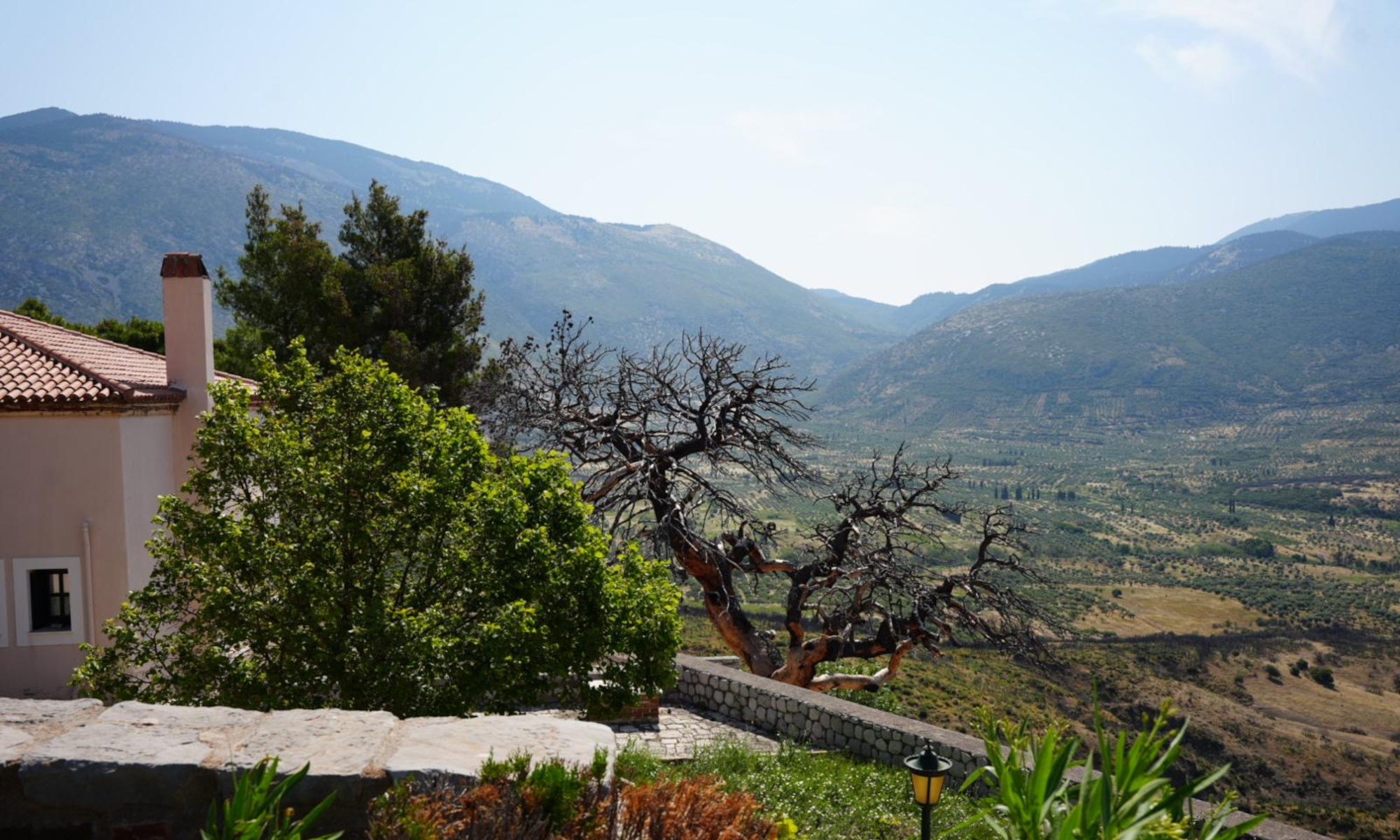Isabella Dail
No matter what street corner you’re stationed on, you’re likely to see graffiti in the Pangrati region of Athens. Some of it’s in English, some Greek. Some of it’s political, some isn’t. All of it–along with the vibrant street murals, bustling cafés, and thriving student population–suggests that Pangrati houses a vivacious artistic, political, and intellectual scene.
As a van carried me from the academic hub to my apartment, I was immediately struck by a sense of community. As the driver rounded a particularly tight corner, he reached out the window to shut the side-view mirror, which gave him the mere centimeters needed to complete the turn without denting a parked car. The quaint roads embodied the intimacy of Pangrati that I have come to love. I’ve seen individuals of all ages donning trendy sunglasses and tote bags bump into one another and say a quick hello. From what I’ve seen, there’s a real sense of connection in Pangrati, and I’ve been able to speak to locals and other students with equal ease.
I was also struck by a sense of juxtaposition. The quiet interactions between older locals co-exists with a flourishing community of young people, including up and coming artists. Sofia Psiridoti recently founded her concept art studio Bok Choy, which focuses on politically and personally motivated art, in Pangrati. When I arrived at her studio, she greeted me in vintage clothes with a pickle jar in hand. As we spoke, she attempted to open her snack with the assistance of a lighter that she held to the rim.
“I want some slow living inside the city, and maybe this part of Athens agrees with my political beliefs, has a lot of art and also has more human connections,” she said.
Her studio’s curation embodies the nuance of the Pangrati that I’ve seen. Kitschy pop art pieces sit beside serious political statements. Sexual innuendos mix with heartbreaking personal stories on the studio’s walls. Eat your vegetables, said one painting, eggplants covering the rest of the canvas. A tarp with poetic messages describing Psiridoti’s recent heartbreak hung nearby.
Her layered messages mimicked the complexity of voices I’ve encountered while traversing the region’s hilly streets. A comedy bar faces an Orthodox church. “NO BORDERS NO NATIONS” sprawls across a facade in an eye-catching hot pink paint. A formal art institution like the Basil and Elise Goulandris foundation and Bok Choy call the same area home.
Along with the rest of the arts scene in Pangrati, the evolution of Psiridoti’s own work dovetails with shifts in national politics.
“I cannot live my life normally and make art while every day I see people dying. So the problem now is that I cannot make art. I’m just trying to do the pop stuff that the shop sells,” she said about the conflict in Gaza.
From my observations, Pangrati bridges differences, whether that be in age, nationality, or aesthetic style. Yet, suggested by various pockets of graffiti, the region united on one topic: political views. Some of the graffiti, especially messages on the conflict in Gaza, also point to larger national issues.
In 2023, John Psarapoulous wrote that the Greek government’s support for Israel could “rankle” the public, who favor neutrality. While graffiti in Pangrati is far more prominent than other regions of Athens I’ve visited, our temporary home shows signs it aligns itself with Palestine, despite the government backing Israel.
During my first week in Pangrati, I’ve come to both look past and deeply into the graffiti that immediately struck my attention upon arrival. Pangrati, above everything else, is a community, one that holds locals, international students, art, food, nightlife, religion, and politics together. At its heart, I’ve come to appreciate Pangrati as a region that carves its own identity while still engaging in the national conversation.
